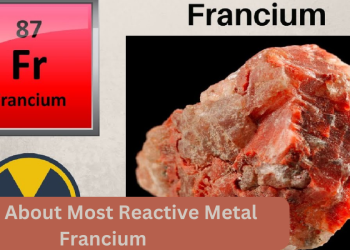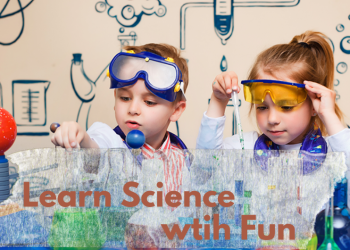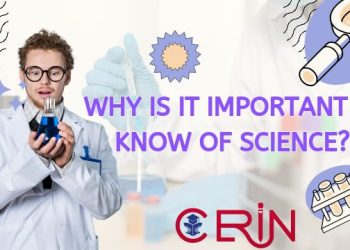Common science myths cannot be overlooked while studying scientific issues. While science may love accuracy and fairness, we do encounter myths or wrong information quite often. Scientists and researchers have debunked some myths over time, and some are still around.
Here, some popular yet incorrect scientific facts will blow you away. Let’s end those years of fooling us with these:
-
Lightning Does not Strike A Place Twice:
Why would not it be? Lighting surely does not have any location preferences. Besides, several reasons that contribute to lightning, and location is not one of them. As a matter of fact, tall buildings or trees or any infrastructure get struck more. However, many know about a park ranger Roy Sullivan in America who got hit by thunder seven times in a row. The reason behind this incident is unknown.
-
Antibiotics can kill a virus for Good:
The virus is not alive, let alone kill it. According to the Virology textbook, viruses do not reproduce, metabolize, or eat, therefore, do not perform any function to be called a life. The virus survives in a protein body cell only. When your body cell is alive, a virus takes over it through some DNA and makes it infected. Antibiotics repairs that cell or destroys it to halt virus activities but not kill it.
-
Humans only have five senses.
When it comes to defining sense, you will not find any concrete definition of it. Scientists or doctors ascertain no particular elements to identify what sense is exactly. Moreover, several other ‘feelings’ are considered senses such as the sense of temperature or pain. One common sense is equilibrioception or a sense of balance. It helps to keep balance during sports or athletic events. On the other hand, the sixth sense is not admittedly proved yet. Therefore, those five senses are familiar and most useful in cases but not the only ones we humans have.
-
MSG is bad for health:
Monosodium glutamate (MSG) is a popular flavor additive for savory items such as soy sauce, parmesan cheese, and noodles. It has a bad reputation for being harmful to the human body. Many believe that consuming MSG for a long time can cause a range of illnesses, from migraines to cancer. Let’s find out what experts have to say about it.
In 2007, the University Hohenheim research team conducted secondary research on MSG extensively to clarify this myth. The researchers established the result by claiming that tasting salt is not harmful to the body but rather enhances the flavors immensely. Today, health authorities Trusted Sources like the Joint FAO/WHO Expert Committee on Food Additives (JECFA), the Food and Drug Administration (FDA), and the European Food Safety Association (EFSA) recognize MSG as safe (GRAS). According to their statement, an acceptable amount of 14 mg per pound of body is safer for the body.
-
Space is completely silent.
People have believed for years that silence is the only sound you can hear in space. This common science myth has some truth in it. In fact, atomic vibration and Molecules (such as air) travel in places that create sound. Space is an empty place means no molecules or atoms exist there. Therefore, the statement was that sound does not have any medium to travel by in this vacuum place.
However, a discovery by Nasa in 2022 has falsified that claim. NASA said that space can be earsplitting when the situation is conducive for sound creation. This refers to a galaxy cluster with hot gas surrounding by. NASA has released an audio of a black hole that exists in the middle of the Perseus galaxy cluster. The pressure wave coming out from the black hole creates a current wave in the nearby star’s hot gas. Though the black hole releases no sound, the plasma diffused from it carries a long length of sound waves. Gives you a chill to hear a black hole howling.
-
Race is determined by genetic differences.
A common belief that exists in explaining racial differences is that people of different races carry different genes. This is not true. Rather, humans share 99 percent of genes identical to each other. Astoundingly, a study from 2002 shares an interesting fact that Africans have more genetic diversity within themselves than between Eurasians and Africans. Race is more of a social construction of human grouping. This is to address distinguishing human populations from different locations. Biological components do not define race rather by physical and cultural factors do. Geographical location also matters in forming a race.
-
Bacteria Create Diseases
We teach our children to stay away from germs to avoid getting sick. This is a noble intention. However, misconception strikes when parents mistakenly explain what ‘germs’ are and replace the word with ‘bacteria’. This is one of the common science myths popular socially even. TV ads or awareness-raising content also contribute to this scientific misconception. On the contrary, most bacteria are harmless to the human body. Moreover, we need a set of bacteria for our body’s function and well-being. A lack of these bacteria can cause poor health situations in some cases. Learn to differentiate the good ones, please.
-
A Resting Object has no Force Working on it:
We see an object sitting on a table, we instantly assume that no force is pushing it to act, hence it is steady. In fact, it is the opposite. Given that the net amount of force acting on an object is equal to the sum of the vectors of all the forces, a resting object has an amount of force acting on it that is zero. This stands in line with the first law of motion by Newton. It says when multiple forces act on an object, the forces balance with each other in sharing the acting forces by balancing or canceling each other. Hence, their vector sum becomes zero. The object will stay as it is.
Summing up,
Common science myths are hovering around for so long that they seem to be believed as true by many. These myths are not going away soon. However, we have to keep debunking these misconceptions for the sake of our children. Additionally, questioning these myths will inspire their scientific quest with ‘how’ and ‘why’. Thus, our children will be into science by playing around with these myths. These will also help them debunk. It will inspire them to develop a keen interest in our surroundings rather than only a casual observation.




















